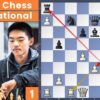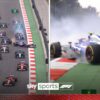The unforgiving street circuit of Singapore once again delivered a potent cocktail of high-speed drama and contentious decisions, culminating in a significant penalty for Lewis Hamilton and a fiery outburst from Fernando Alonso. When mechanical failure meets strict regulations, the fine line between misfortune and infringement becomes blurred, igniting a debate that resonates far beyond the checkered flag.
When Physics Meets Regulations: Hamilton`s Unfortunate Demotion
The night race in Singapore is a grueling test of both machine and driver, its tight corners and punishing humidity demanding absolute precision. For Mercedes` Lewis Hamilton, the closing stages of the Grand Prix became a desperate balancing act. As he pushed his car to its limits on a two-stop strategy, running soft tires for the final 16 laps, his front brakes began to falter. A visual spectacle of sparks flying from the left front tire was a stark indicator of the mechanical distress. In a valiant effort to nurse his ailing car across the finish line and salvage precious points, Hamilton inadvertently exceeded track limits multiple times.
While his skill and determination allowed him to narrowly hold off Fernando Alonso, finishing just four-tenths ahead, the stewards quickly intervened. The outcome? A five-second time penalty. This seemingly small increment had a significant impact, demoting Hamilton to eighth place, effectively placing him behind the very driver he had just fended off.
The Voice of Experience: Alonso`s Blunt Assessment
Few drivers on the grid possess Fernando Alonso`s depth of experience and, perhaps more famously, his candor. His reaction to Hamilton`s driving style in the dying moments of the race was anything but subdued. A “foul-mouthed radio rant,” as it was described, encapsulated his disbelief and palpable frustration.
“I cannot f****** believe it. I mean, I cannot f****** believe it. Is it safe to drive with no brakes? For me, you cannot drive when the car is unsafe. Sometimes they try to disqualify me with no mirror, and now you have no brakes and everything is fine? I doubt it.”
Alonso`s passionate outcry wasn`t merely about losing a position; it was a potent jab at what he perceived as inconsistency in the application of safety regulations. His reference to past penalties he`d received for minor infringements, such as a missing mirror, contrasted sharply with what he saw as a significant safety issue being tolerated. This raised the age-old question: where do we draw the line between a mechanical failure that forces a driver to adapt, and a truly “unsafe” car that should be pulled from the race?
Stewards` Stance: The Unforgiving Rulebook
In the aftermath, Hamilton confirmed to the stewards that he had indeed left the track on several occasions, attributing it directly to his efforts to manage a critical brake issue. One might anticipate a degree of leniency given the circumstances, a recognition of the extraordinary challenge presented by a failing component.
However, the stewards, operating under the precise stipulations of the Driving Standards Guidelines, concluded otherwise. They acknowledged Hamilton`s explanation but determined that a “brakes issue situation” was not a “justifiable reason” for track limits infringements under the exemption list. The standard penalty was applied, a decision that neither Hamilton nor his team representative contested. This highlights the rigorous, and often inflexible, nature of Formula 1 regulations. While the human element and the drama of racing are undeniable, the rulebook remains the ultimate arbiter, even when mechanical adversity strikes.
Beyond the Penalty: The Quest for Qualifying Perfection
Adding another layer to Hamilton`s Singapore weekend was his ongoing assessment of his team`s performance. Despite out-qualifying his teammate, Charles Leclerc (of Ferrari, a detail that humorously makes the original headline`s “Ferrari driver” reference rather ironic in hindsight given Hamilton`s future move), for the first time since the British Grand Prix, Hamilton felt there was still significant room for improvement. The Ferrari team, while expected to perform well on the twisty Singapore circuit, ultimately found themselves trailing McLaren, Mercedes, and the dominant Verstappen. Hamilton, ever the perfectionist, emphasized the team`s relentless effort but also suggested that crucial performance was being “left on the table” during qualifying sessions. This recurring theme underscores how critical every millisecond on a Saturday can be for dictating the flow and fortune of a Sunday race.
The Enduring Allure of F1 Drama
The Singapore Grand Prix serves as a microcosm of everything that makes Formula 1 such a compelling spectacle. It’s not just about speed; it`s about the intricate dance between human skill, technological prowess, and the immutable force of regulations. Lewis Hamilton`s battle with his brakes, his strategic choices, and the subsequent penalty, coupled with Fernando Alonso`s passionate critique, painted a vivid picture of the sport`s high-stakes nature.
In a sport where fractions of a second and millimeters on track can alter destinies, the Singapore incident reminds us that the drama is as much off the track, in the stewards` room and on team radio, as it is on the asphalt. And that, perhaps, is precisely why we keep watching.








